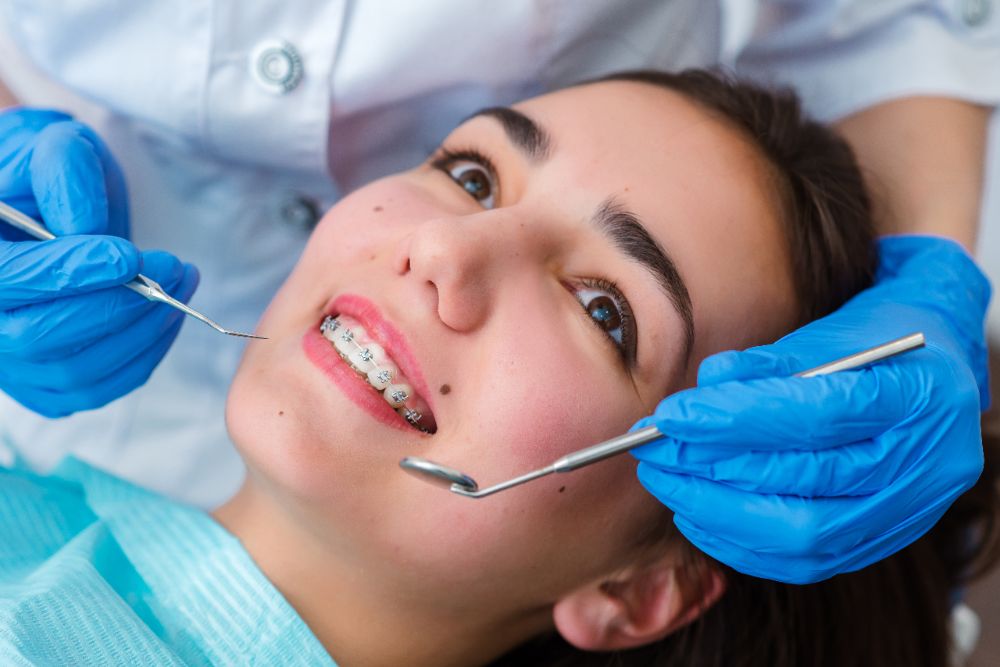Comprehensive Overview to Orthodontics Treatments for Correcting Dental Imbalances
In the realm of orthodontics, the journey to achieving a flawlessly aligned smile entails a myriad of procedures customized to fix oral misalignments. From traditional braces to undetectable aligners and even medical options, the area of orthodontics provides a variety of services to address differing degrees of oral irregularities. Comprehending the intricacies of each treatment, including their mechanisms, advantages, and potential disadvantages, is important in making notified choices about one's orthodontic treatment. As we navigate with the comprehensive overview to orthodontic treatments for fixing oral misalignments, the elaborate details of each method will unravel, shedding light on the path towards a unified and functional oral placement.
Orthodontic Procedures Introduction

In enhancement to clear aligners and conventional braces, orthodontists might additionally suggest other interventions like headgear, palatal expanders, or retainers to resolve details positioning problems (orthodontics). These treatments are customized per person's special needs and might include a combination of therapies to accomplish the preferred results. Normal modifications and monitoring are crucial components of orthodontic treatment to make certain development is on track and to make any needed adjustments in the process. By going through orthodontic procedures, people can not only attain a straighter grin however also boost their overall dental health and feature.
Conventional Dental Braces: Just How They Work
When considering orthodontic treatments for dental misalignments, traditional braces stand out as a reliable technique for dealing with teeth placing. Conventional dental braces consist of brackets, wires, and bands that function with each other to use constant pressure on the teeth, progressively relocating them right into the preferred placement.
As pressure is used to the teeth via the dental braces, the bone bordering the teeth is improved to support the new tooth placements. Individuals will certainly require regular adjustments at the orthodontist's office to make sure the braces proceed to use the proper stress for reliable teeth movement.
Undetectable Aligners: Cons and pros
Invisible aligners use a very discreet and practical choice to traditional braces for correcting oral misalignments. These clear, custom-made trays are basically unseen when put on, making them an attractive alternative for individuals looking for an extra aesthetically pleasing orthodontic treatment. Among the main benefits of undetectable aligners is their removability, permitting for much easier maintenance of oral health contrasted to conventional dental braces. People can remove the aligners prior to eating or brushing their teeth, reducing the danger of food getting stuck in the home appliance and streamlining the cleansing procedure.

Surgical Orthodontic Options
Surgical treatments in orthodontics existing feasible choices for resolving complex dental misalignments that might not be successfully resolved with traditional orthodontic treatments. While traditional dental braces and unnoticeable aligners can correct numerous orthodontic problems, certain situations call for medical treatment to attain optimum outcomes. Surgical orthodontic choices are commonly advised for serious malocclusions, considerable jaw disparities, and cases where the underlying bone structure needs modification to attain correct placement.
One typical medical orthodontic procedure is orthognathic surgical treatment, which involves rearranging the jaws to fix useful problems such as difficulty talking or chewing. This surgical treatment is typically executed in collaboration with an orthodontist that assists line up the teeth before and after the procedure. Surgical orthodontics may additionally entail procedures to expose impacted teeth, remove excess periodontal cells, or improve the jawbone to develop a much more unified face profile.
Prior to considering medical orthodontic alternatives, individuals undertake a comprehensive examination to identify the requirement and possible advantages of such treatments. orthodontist. While surgical procedure might appear complicated, it can dramatically enhance both the feature and aesthetics of the smile in situations where traditional orthodontic treatments fail
Retainers and Post-Treatment Care

Post-treatment care entails following the orthodontist's instructions diligently. This might consist of appropriate dental hygiene methods, participating in follow-up visits, and putting on the retainers as recommended. Failing to adhere to post-treatment treatment guidelines can result in relapse, where the teeth progressively return in the direction of their original positions. Regular retainer wear, excellent oral hygiene, and regular oral check-ups are necessary for keeping the outcomes achieved with orthodontic surgical treatment and ensuring the long-term security of the remedied oral alignment.
Conclusion
In final thought, orthodontic treatments provide numerous choices for remedying dental misalignments. Surgical orthodontic options are offered for a lot more severe imbalances. Overall, orthodontic procedures can efficiently boost oral wellness and aesthetic look.
As we browse through the comprehensive guide to orthodontic treatments for correcting dental misalignments, the elaborate details of each technique will unfold, losing light on the path towards a harmonious and practical oral alignment. - cumming orthodontics
One of the most common orthodontic treatments is the use of braces, which consist of steel braces cumming orthodontics and wires that apply mild pressure to gradually shift teeth right into the desired placement.When taking into consideration orthodontic therapies for dental imbalances, typical braces stand out as a time-tested method for dealing with teeth placing. Additionally, invisible aligners might not be suitable for complex orthodontic problems that require even more significant teeth activity, as they are usually suggested for mild to moderate cases. Retainers are personalized orthodontic tools developed to hold teeth in their dealt with placements after the completion of orthodontic therapy.